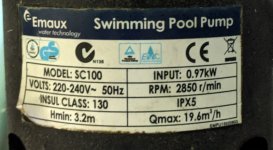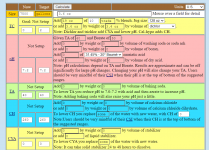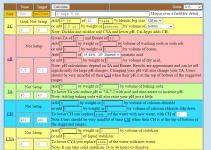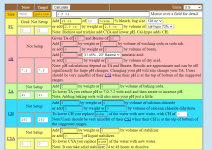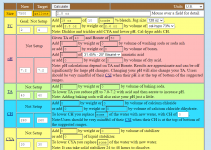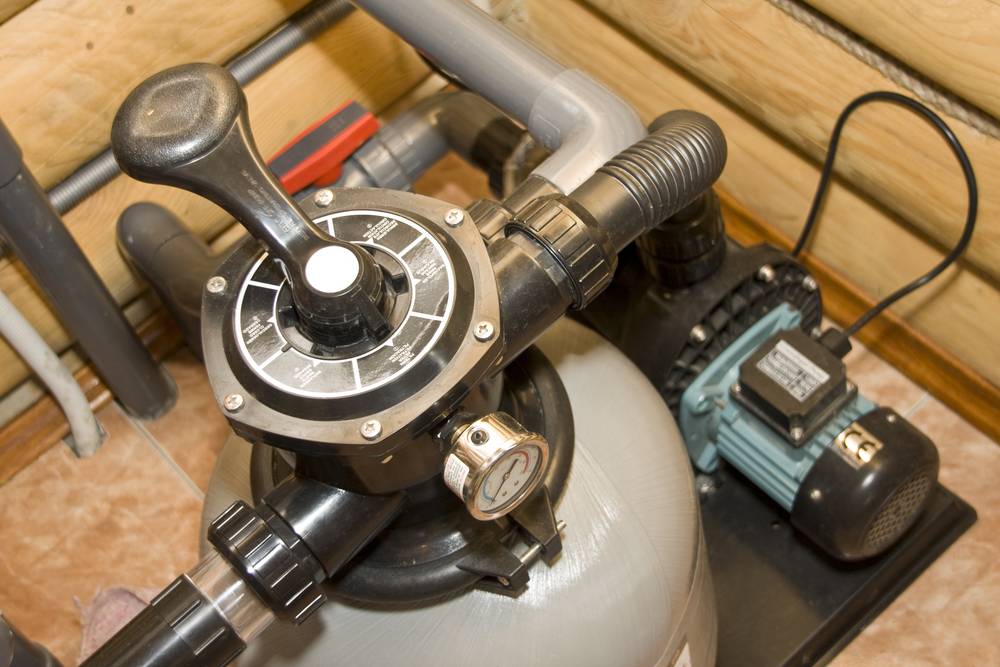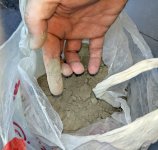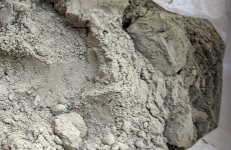Hi all and thanks in advance for helpful advice.
Thanks to COVID I am "stuck" in Hoi An, Viet Nam (good place to be stuck) and as the only tenant in a 6-apartment building (a typical scene as tourism is decimated here) I have taken on the role of maintaining (and enjoying) its pool. Thanks to this forum and many YouTube resources I have given myself a crash course in pool maintenance that has been mostly successful.
After an initial chlorine shock and nursing the 28728L (7589G) pool from green back to blue 2.5 months ago, I have been very diligent about measuring and maintaining proper pH/Chlorine/Alkalinity levels, skimming leaves and stuff off the pool surface daily, brushing and vacuming the pool every few days, and backwashing the sand filter regularly (trying backwash intervals ranging from daily to every 2 weeks).
BUT despite all that, the pool consistently has this sediment floating in it (see video here and pic attached below):
(video showing symptom)
IMG-20210709-224321 (full-res image)
Even if I run my pump for 24 hours, the sediment remains. If I vacume to filter, no change. If I sweep, vacume to waste, and backwash, the sediment is back in 1 day just the same.
The sediment is all over the pool, but particularly noticeable in the pool light at night. The sediment is lighter than beach sand (I don't know what kind of sand is inside the filter), moves very slowly, and takes hours and hours to settle. But other than this sediment, the water is NOT cloudy and stays blue.
I have tried mega-shocking the pool again (bringing the Chlorine level to where OTO turns bright red (>35ppm TC Is there a basic test kit with distinctive yellow colors? ) and bright orange (>25ppm TC) for several days ) and it didn't help.
WTF is this sediment and how do I get rid of it? See theories below.
In addition to the sediment, there is one more suspicious symptom. If I gently drop the pool brush to the bottom and make a quick stroke, I can always see a very subtle cloud of greyish fine dust. It is hard to see even with a still pool, but it is always there. But that dust never rises and the pool itself is never cloudy and stays blue. More on that later...
Vital stats:
My theories about the sediment are:
#1 Maybe sand in filter needs replacement? Unlikely because the sand was replaced in the last 2-3 years according to landlord (though maybe the Vietnamese techs here use beach sand :| )
#2 Maybe sand filter laterals/standpipe are damaged and the sediment itself is actually sand? But would sand float as seen in the video (I'm not sure because I've never actually seen filter sand before, nor do I know if they used real filter sand)? And I never see islands of sand at the bottom of the pool.
#3 Maybe sand filter laterals/standpipe are damaged and the sediment itself is junk from the pool? More likely. But then why would I only have large sediment as seen in the video? Why wouldn't my pool be cloudy with smaller particles as well?
#4 Some kind of chlorine-resistant algae like mustard algae? Possible but unlikely since I don't see any stains (though the pool is pattered blue tiles so stains would be a bit hard to see; I don't see any stains on the white ladder stairs), and doing the mega-shock to 35ppm TC didn't affect it. However, the greyish dust mentioned above seems to be a vote in favor of this theory, maybe?
#5 Since I use cal hypo, maybe the sediment is chunks of calcium something-or-other that cannot dissolve in the water because the water is saturated with calcium-something-else already. During pool startup when I used soda ash to raise alkalinity, I totally "snowed out" the pool, with a layer of calcium deposits on the infinity edge thick enough to write on with my finger. But that resolved after a few days. Based on a post in this forum, I tried the trick of taking some of the pool water into a new container, and diluting it a bunch with tap water and waiting 30 minutes. The sediment remained after dilution. So probably not excessive calcium? By the way, while we're talking about calcium, there are three teeny-tiny, sharp spikes of Calcium sticking out at three points in the deep end of the pool (as I understand it, the spiky crystal shapes are more due to insufficient calcium/LSI than the calcium "scale" that is from excessive calcium/LSI but I believe they have been there for much longer than the 2.5 months I've been looking over the pool.
#6 Is my plastic tarp disintegrating into the pool? No, I checked that.
#7 what else??
So so far, #3 seems the best theory? What do you think?
It will be very expensive to get the local guys here to open the pump, possibly replace the sand, and check the laterals/standpipe (because I am a newbie who has never opened a filter, and because the filter is located lower than the pool and thus there is a possibility of an out-of-control spill that empties the pool into an access hole with 240V electrical wires in a country where the breaker is likely miswired and somewhat hot even when off due to ground leaks, I am not confident about performing that operation myself). Based on how disappointed I am with their lack of testing, I'm not even sure if they're capable of checking the laterals. Before I and/or my landlord spend that money, I want to make sure it's sensible to even try that.
Note that clarifier and flocculant are NOT available at all in Viet Nam. Nobody has even heard of either of them here. But I suspect it doesn't matter since the problem is more likely the filter or algae, and even if I did floc to clean, the sediment would come right back.
The only chemicals available in Viet Nam are cal hypo, muratic acid, various dichlor/trichlor Crud, and a few mystery "pool cleaner" chemicals from Thailand which have no ingredients (I can read Thai writing, and there no ingredients in Thai either) and which nobody can tell me what they are.
So, we don't have a the best tools or measurements to work with here, but what can we say from the data so far?
Thanks!
Thanks to COVID I am "stuck" in Hoi An, Viet Nam (good place to be stuck) and as the only tenant in a 6-apartment building (a typical scene as tourism is decimated here) I have taken on the role of maintaining (and enjoying) its pool. Thanks to this forum and many YouTube resources I have given myself a crash course in pool maintenance that has been mostly successful.
After an initial chlorine shock and nursing the 28728L (7589G) pool from green back to blue 2.5 months ago, I have been very diligent about measuring and maintaining proper pH/Chlorine/Alkalinity levels, skimming leaves and stuff off the pool surface daily, brushing and vacuming the pool every few days, and backwashing the sand filter regularly (trying backwash intervals ranging from daily to every 2 weeks).
BUT despite all that, the pool consistently has this sediment floating in it (see video here and pic attached below):
IMG-20210709-224321 (full-res image)
Even if I run my pump for 24 hours, the sediment remains. If I vacume to filter, no change. If I sweep, vacume to waste, and backwash, the sediment is back in 1 day just the same.
The sediment is all over the pool, but particularly noticeable in the pool light at night. The sediment is lighter than beach sand (I don't know what kind of sand is inside the filter), moves very slowly, and takes hours and hours to settle. But other than this sediment, the water is NOT cloudy and stays blue.
I have tried mega-shocking the pool again (bringing the Chlorine level to where OTO turns bright red (>35ppm TC Is there a basic test kit with distinctive yellow colors? ) and bright orange (>25ppm TC) for several days ) and it didn't help.
WTF is this sediment and how do I get rid of it? See theories below.
In addition to the sediment, there is one more suspicious symptom. If I gently drop the pool brush to the bottom and make a quick stroke, I can always see a very subtle cloud of greyish fine dust. It is hard to see even with a still pool, but it is always there. But that dust never rises and the pool itself is never cloudy and stays blue. More on that later...
Vital stats:
- Volume: 28728L (7589G)
- Design: infinity edge (see pic) with tile walls and floor
- Circulation: not fantastic: intake jets are at bottom of pool at shallow end and middle of pool, main drain at deep end, infinity edge that is installed incorrectly so that it only spills at shallow end (so not great circulation from jets to deep end)
- Placement: pool is mostly covered under a roof (about 10% of it gets sun during the day but I cover that part with a plastic tarp, and that vastly reduces Chlorine consumption too) in a hot beach town in Viet Nam where the air temp ranges from 90F - 103F every day, and where the sea wind is always carrying pollen and other stuff to the pool surface. Water temp roughly ranges 77 F - 85 F (pool is in shade).
- Chlorine: ALL chlorine (both shocking and everyday) comes from 70% cal hypo granules. The pool eats approximately 42g of cal hypo per day in order to stay level (though it depends on temp). Liquid chlorine never used. I use an OTO test and keep the TC between 1ppm and 3ppm as best as the test allows (* see important note below about FAS-DPD/FC test availability). After the initial balance on pool startup, whenever I add Chlorine, the TC jumps very predictably from the amount I added, so this indirectly suggests that the TC in the pool is mostly FC.
- pH balancing: after initial pool startup and balance (when I used some baking soda and soda ash to establish initial alkalinity and pH), I only ever need to reduce the pH (the sun and aeration raise the pH every day), and I do so with small amounts of Muriatic Acid (200ml per week approx). I keep pH in range 7.6-8.2. I am using a good-enough electronic Chinese pH meter that I calibrated with real distilled water from a local water safety university and 3 pH buffer powders.
- CYA: There is NO cyanuric acid in the water and never has been. This pool never used dichlor, trichlor or any other tablets. I am happy about this; the stuff seems like a a nightmare and cal hypo is cheap and plentiful.
- Alkalinity: I initially got the Alkalinity to roughly 80 and I believe it may have oozed down to 60 by now, but I can only measure alkalinity using a really Darnty Chinese test strip where the strip color barely resembles any of the example legend colors ( * see important note below about test availability)
- Calcium Hardness: The only tool I have to measure this (Darnty Chinese test strip) sucks, sucks, sucks. The color doesn't match any of the legend colors, even when the Chlorine and pH are in a good range. If I had to guess, I would guess 250-500, but the color match is absurd. Since I use cal hypo, wouldn't one expect high calcium hardness?
- Pump: sand filter. Doesn't matter how long I run the pump, the sediment remains. I typically run it for 2-3 hours per day but even at 24 hours the sediment remains.
My theories about the sediment are:
#1 Maybe sand in filter needs replacement? Unlikely because the sand was replaced in the last 2-3 years according to landlord (though maybe the Vietnamese techs here use beach sand :| )
#2 Maybe sand filter laterals/standpipe are damaged and the sediment itself is actually sand? But would sand float as seen in the video (I'm not sure because I've never actually seen filter sand before, nor do I know if they used real filter sand)? And I never see islands of sand at the bottom of the pool.
#3 Maybe sand filter laterals/standpipe are damaged and the sediment itself is junk from the pool? More likely. But then why would I only have large sediment as seen in the video? Why wouldn't my pool be cloudy with smaller particles as well?
#4 Some kind of chlorine-resistant algae like mustard algae? Possible but unlikely since I don't see any stains (though the pool is pattered blue tiles so stains would be a bit hard to see; I don't see any stains on the white ladder stairs), and doing the mega-shock to 35ppm TC didn't affect it. However, the greyish dust mentioned above seems to be a vote in favor of this theory, maybe?
#5 Since I use cal hypo, maybe the sediment is chunks of calcium something-or-other that cannot dissolve in the water because the water is saturated with calcium-something-else already. During pool startup when I used soda ash to raise alkalinity, I totally "snowed out" the pool, with a layer of calcium deposits on the infinity edge thick enough to write on with my finger. But that resolved after a few days. Based on a post in this forum, I tried the trick of taking some of the pool water into a new container, and diluting it a bunch with tap water and waiting 30 minutes. The sediment remained after dilution. So probably not excessive calcium? By the way, while we're talking about calcium, there are three teeny-tiny, sharp spikes of Calcium sticking out at three points in the deep end of the pool (as I understand it, the spiky crystal shapes are more due to insufficient calcium/LSI than the calcium "scale" that is from excessive calcium/LSI but I believe they have been there for much longer than the 2.5 months I've been looking over the pool.
#6 Is my plastic tarp disintegrating into the pool? No, I checked that.
#7 what else??
So so far, #3 seems the best theory? What do you think?
It will be very expensive to get the local guys here to open the pump, possibly replace the sand, and check the laterals/standpipe (because I am a newbie who has never opened a filter, and because the filter is located lower than the pool and thus there is a possibility of an out-of-control spill that empties the pool into an access hole with 240V electrical wires in a country where the breaker is likely miswired and somewhat hot even when off due to ground leaks, I am not confident about performing that operation myself). Based on how disappointed I am with their lack of testing, I'm not even sure if they're capable of checking the laterals. Before I and/or my landlord spend that money, I want to make sure it's sensible to even try that.
Note that clarifier and flocculant are NOT available at all in Viet Nam. Nobody has even heard of either of them here. But I suspect it doesn't matter since the problem is more likely the filter or algae, and even if I did floc to clean, the sediment would come right back.
The only chemicals available in Viet Nam are cal hypo, muratic acid, various dichlor/trichlor Crud, and a few mystery "pool cleaner" chemicals from Thailand which have no ingredients (I can read Thai writing, and there no ingredients in Thai either) and which nobody can tell me what they are.
So, we don't have a the best tools or measurements to work with here, but what can we say from the data so far?
Thanks!
Attachments
Last edited:


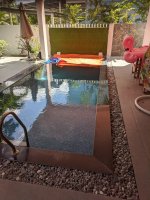
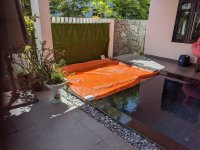
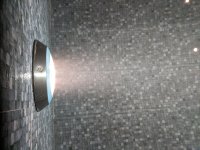
 As you adequately noted, you're at a bit of a disadvantage without a proper test kit, so we won't harp on that issue. Here are some of my thoughts after reading your notes:
As you adequately noted, you're at a bit of a disadvantage without a proper test kit, so we won't harp on that issue. Here are some of my thoughts after reading your notes:
